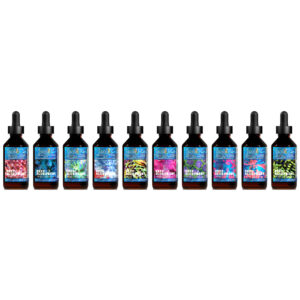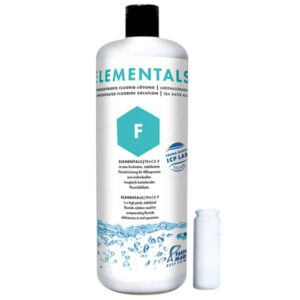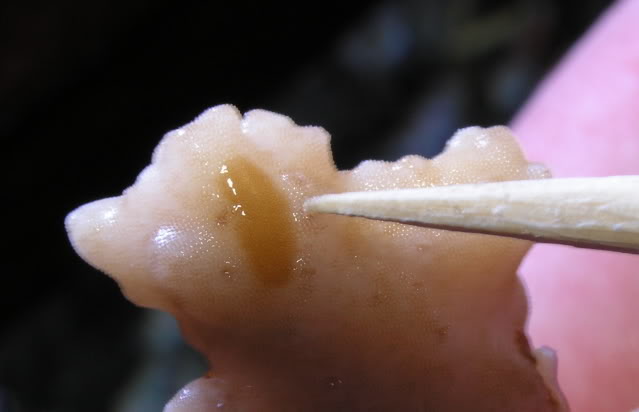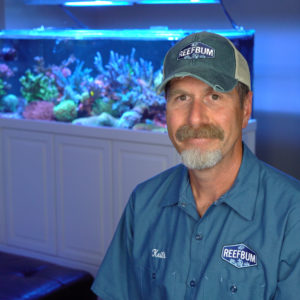Reef keepers have long debated whether the constant use of a UV sterilizer is helpful or harmful to a saltwater reef tank. In essence, a UV sterilizer has a UV bulb in a water tight compartment that will kill or zap undesirables in the water that pass through the unit. Undesirables include free floating algae spores, parasites and troublesome bacteria such as heterotrophic bacteria, which are considered \”scavenger\” bacteria and can bloom, causing cloudy water.
To UV or Not to UV?
A UV will not kill beneficial bacteria that are in the sand bed and live rock since they are not free floating. However, the key question is whether the sterilizer will also kill free floating microorganisms that are beneficial to corals? Are the benefits worth this risk?
Before I delve into that question, let’s take a closer look at the reasons why one would use a sterilizer on a constant basis. What about preventing fish disease? A UV can reduce the amount of parasites in the water column, making it easier to treat an outbreak and reduce the impact. However, it won\’t prevent or eliminate disease. Remember, a UV will kill free floating microorganisms and ich is not free floating in all stages of its life.
Using UV For Dinoflagellates
UV can be a really effective tool for ridding a tank of dinoflagellates. But the dinos must be the type that go into the water column when the tank lights are off. Other varieties of dinos are not free floating during darkness.

It is important to ID the dinos under a microscope to determine whether they are the free floating variety. I had this type in my 225 gallon peninsula tank and ended up using a 57W UV, which can treat up to 355 gallons of saltwater.
Having a properly sized UV with the right amount of flow is very important to maximize the sterilizing capability against dinos. I went with the manufacture’s recommendation for flow, although some feel you should go even lower to increase contact time. I hesitated to do this since I was worried about burning out the bulb.
Before deploying my UV, I siphoned up as many of the dinos as I could. Having no sand in the tank was a blessing because it made it much easier to suck up the dinos on the bottom. I also planned to do a three-day blackout.
I put the input and output of the UV in my sump (the input was upstream from the output). There is a belief that a UV should be in the display tank when fighting dinos since that is where they are most concentrated. However, I did have dinos in my sump so I opted to try the UV in that location first. If it didn’t work I could always move the UV to the display.
I turned the UV on when I started the blackout and kept my fingers crossed. After two days of darkness some of my frags became stressed out and died. I didn’t want to lose any more corals so I decided to turn the lights back on. How did things pan out? Most of the dinos were gone after two days, a very encouraging sign. A week later they were all gone. Three months in and still no dinos. This article has more details on how I won my battle against dinos.
Using UV For Water Clarity
Ok, how about using one to maintain crystal clear water? A UV will certainly help in this regard since it does kill free floating algae spores and problematic bacteria. I used two 24W UVs to successfully clear up cloudy water caused by a bacterial bloom in my 187 gallon tank. They were relatively inexpensive and very easy to install and then remove when I was finished using them. The difference over a couple of days was amazing.


Just keep in mind that a UV will not wipe out something like hair algae attached to rocks or corals. Again, it has to be free floating.
Conclusions
Do I advocate using a UV sterilizer 24/7 on a reef tank to take advantage of the benefits? At one point my answer was no but the effectiveness of UV versus dinos changed my mind. Not only do I have a 57W unit on my peninsula tank, but I also added one to my 187 gallon tank.
My big hesitation was UV could potentially kill beneficial bacteria that reside in the water column. However, as mentioned before, most beneficial bacteria colonize rock, sand and other surfaces in the tank so most are not free floating. Besides thwarting dino outbreaks, I also like that UV can prevent some types of fish diseases. Another plus is UV can improve water quality and hinder certain types of algae outbreaks and bacterial blooms.
Additional Resources
If you would like some help with a new tank build, including help designing a custom aquarium, or help re-configuring your current setup then you can visit this page for more information. And if you are looking to add some equipment, I do sell GHL, Pax Bellum, Reef Octopus Calcium and Kalk Reactors and Royal Exclusiv products, including Dreamboxes, which is the equipment I use and recommend. I also sell Reef Brite metal halide and LED fixtures as well as Maxspect & IceCap Gyres.
As for additional insights and information, please explore my many other reef tank and SPS related articles as well as my YouTube channel. For an even deeper dive into reef tank care you can check out my Reef Keeping Master Class. This online course is an immersive and one of a kind educational tool designed to help reef aquarium hobbyists build and maintain a beautiful SPS reef tank. The course is a series of video presentations with some supplemental video from my YouTube channel. There are also quizzes to help students retain and understand the information presented in the course.
Need some frags…..I can help with that as well 🙂 Please visit my SPS Frag store to see what is available.









